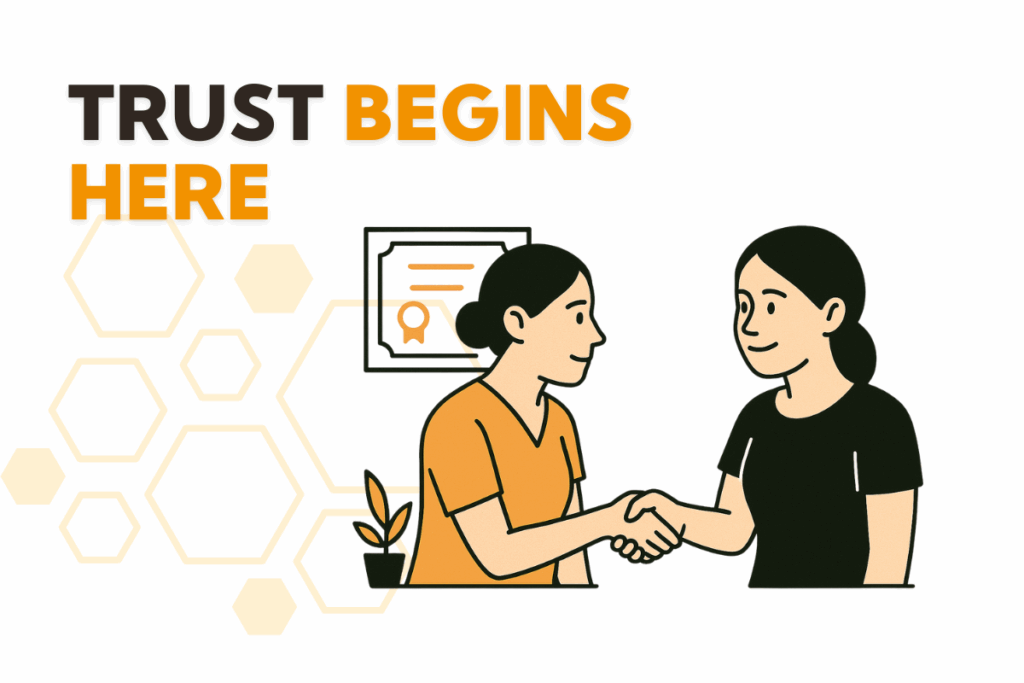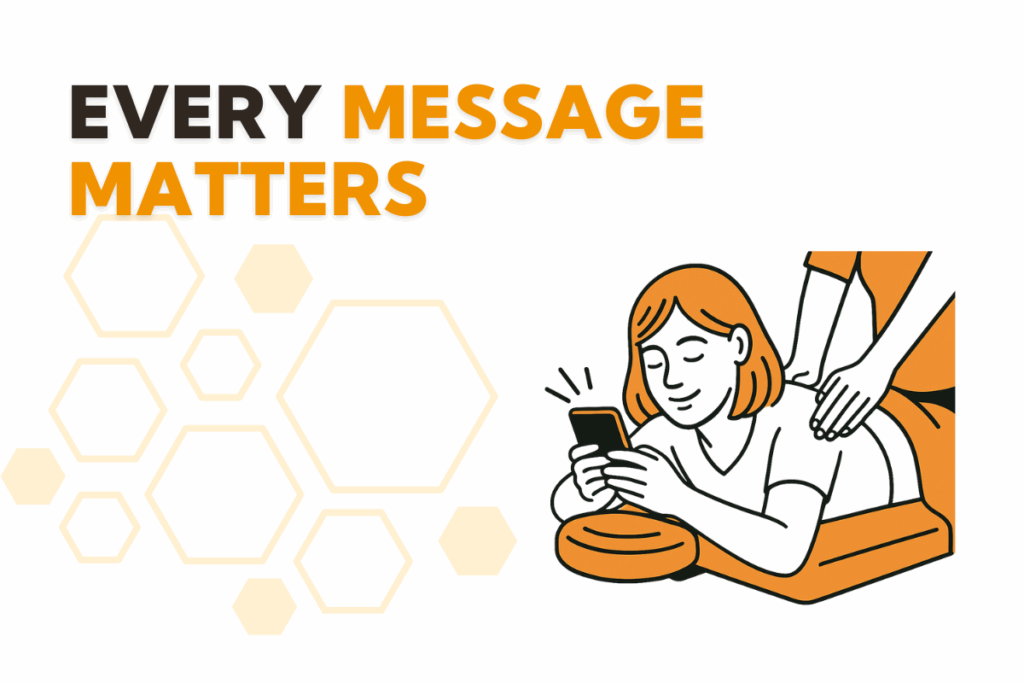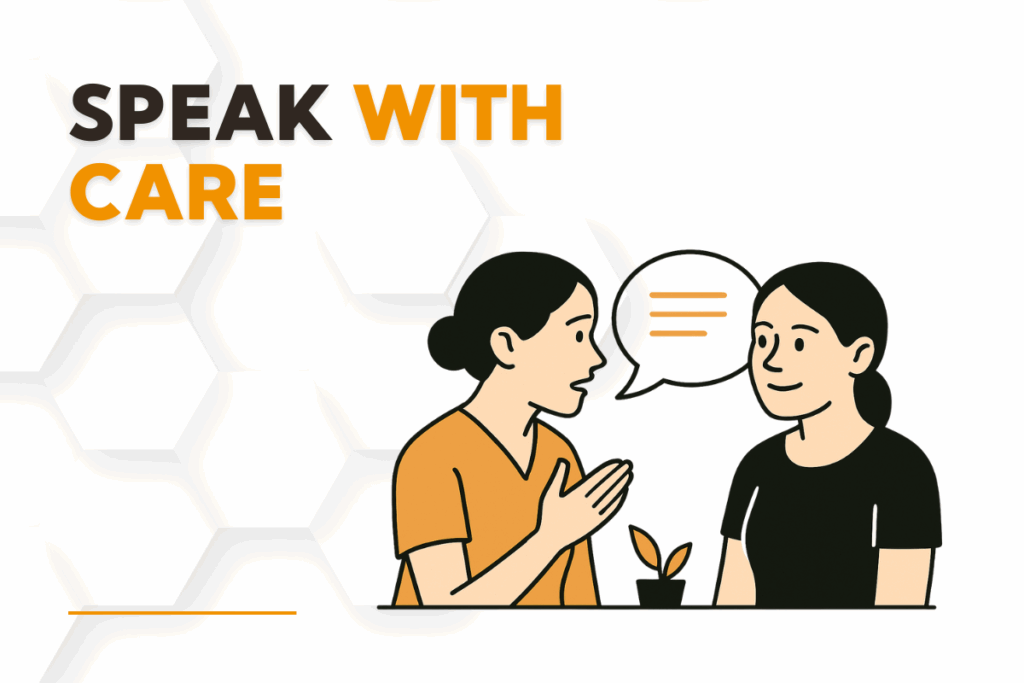Client trust in massage therapy begins long before a client walks into your treatment room—it often starts with a single message. When that communication feels cold, delayed, or unclear, the connection can break before it’s even formed.
Why Unclear Communication Erodes Client Trust in Massage Therapy
Let’s say a client reaches out to confirm a booking. They get a reply that’s vague, unsigned, and sounds nothing like the warm tone they experienced at your clinic. That tiny moment of disconnect can raise doubts: Is this the same team? Do they actually care?
Client trust in massage therapy isn’t just about skilled hands—it’s also about every digital touchpoint. And when communication feels inconsistent, trust begins to unravel.
What Clients Need to Feel Secure and Supported
Consistent Tone That Feels Human
Clients aren’t expecting long replies, but they do want to feel acknowledged. A clear, warm tone and signed name go a long way in creating that sense of security.
Knowing Who’s Speaking
Whether it’s the owner, a therapist, or front desk staff, letting clients know who is responding creates accountability. It shows professionalism and helps build client trust in massage therapy through a personal connection.
Common Mistakes That Damage Client Trust in Massage Therapy
Shared Inboxes with No Clear Ownership
If multiple people respond to the same thread without coordination, it can confuse clients and cause messages to get missed or repeated.
Robotic Templates with No Personality
Templates save time, but without thoughtful customization, they can feel cold and impersonal. This distances the client emotionally—exactly the opposite of what we want.
Lack of Defined Roles in the Team
When clients hear from someone new every time, and no one introduces themselves, it disrupts the sense of relationship and reliability.

How to Improve Client Trust in Massage Therapy with Better Communication
Establish a Primary Clinic Voice
Choose how you want to show up in writing—whether it’s a single person replying or a collective “we,” consistency is key.
Example: “Hi Taylor, thanks for your question! This is Maria at the front—happy to help.”
Use Internal Notes for Smooth Handoffs
Ensure that everyone on your team can pick up the thread with context. Even a quick summary can help the next reply sound seamless and personal.
Tip: Use features like staff communication and task assignment tools to avoid miscommunication between team members.
Personalize Every Template
Even short responses can be tailored to reflect your clinic’s warmth.
Example: “Hi Jamie, your appointment with Dan is confirmed for Thursday at 3 p.m. We’re looking forward to seeing you!”
Train Your Team on Your Tone and Approach
Have guidelines for how your clinic communicates: friendly, timely, and professional. This builds client trust in massage therapy, especially in clinics with rotating team members.
Supporting Trust Without Creating Burnout
Set Expectations for Reply Times
You don’t need to be on call 24/7 to be trustworthy. Just be clear about when clients can expect a response.
Auto-reply example: “Thanks for reaching out. We respond within 24 hours, Monday through Friday.”
Use Automation Thoughtfully
Automations like email and text reminders help reduce no-shows and keep clients informed—without sacrificing the human touch.
Follow Up with a Personal Note
Send a message after treatment to check in. Something as simple as, “Hey, just wondering how your neck is feeling today?” can show clients they’re not just another name in the schedule.
How Massage Clinics Are Strengthening Trust
We’ve seen solo therapists rebuild client trust in massage therapy simply by updating their email sign-offs and creating message consistency. One multi-therapist clinic reduced missed messages by assigning a primary responder per shift and tracking client communications internally.
The result? Fewer client drop-offs and more referrals.

Every Message Matters in Building Client Trust in Massage Therapy
In this field, communication is part of care. Whether it’s the first inquiry or a post-session follow-up, your message is a reflection of your clinic’s values.
Ask yourself: Does our tone match the quality of care we deliver? If not, even small changes can make a big difference in client trust in massage therapy.
Start today by reviewing a few recent replies and adjusting them to sound more like you—warm, clear, and trustworthy.
FAQs
Start small. Use consistent language and always sign off with your name. Clients feel more comfortable when they know who they’re talking to.
Yes. Even if it’s not the same person each time, identifying yourself helps create a reliable, human connection.
It can if overused. Use automation for logistics, not for emotional check-ins or sensitive conversations.
Draft templates with room for personalization. Even a quick “Hi [Name], thanks for reaching out!” makes a big impact.


